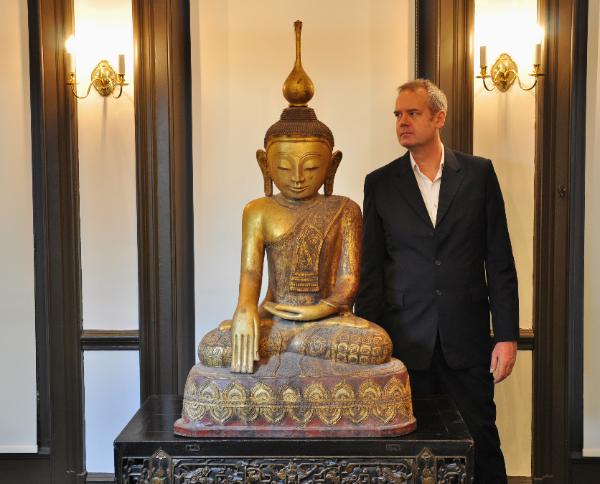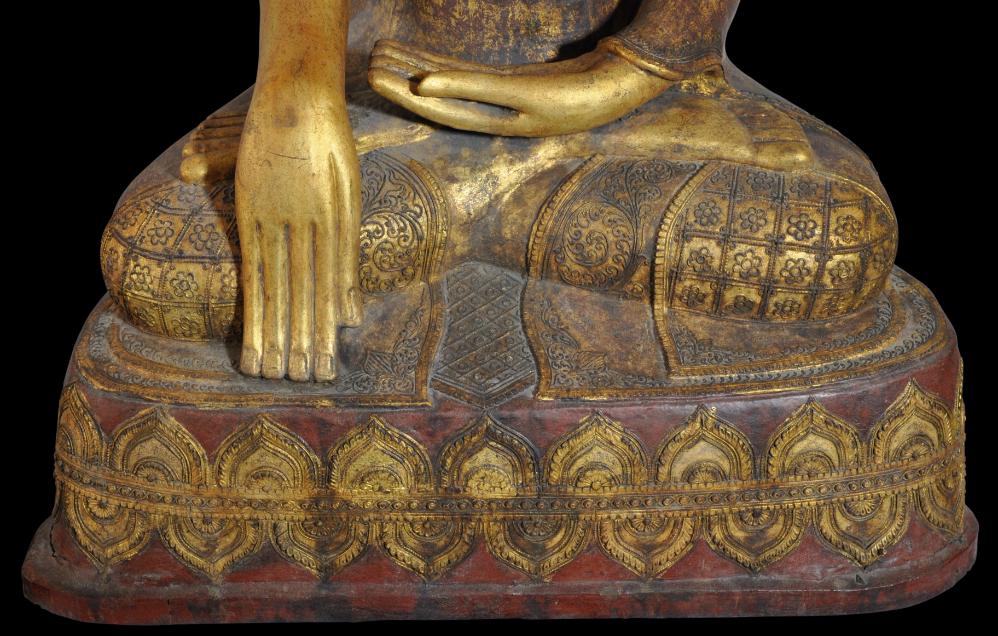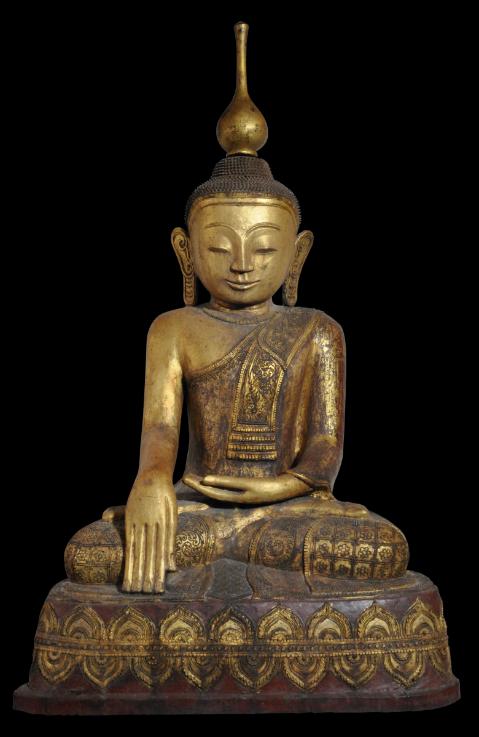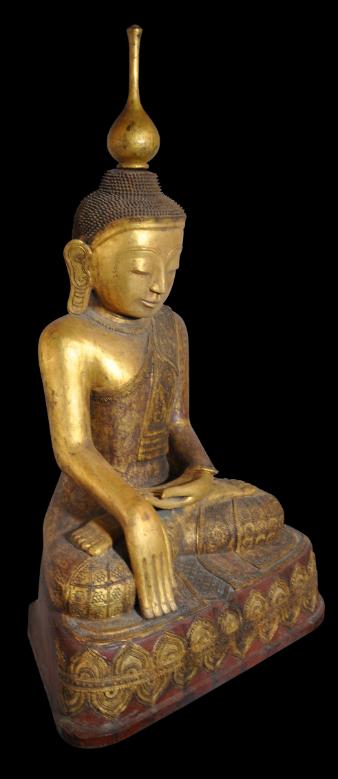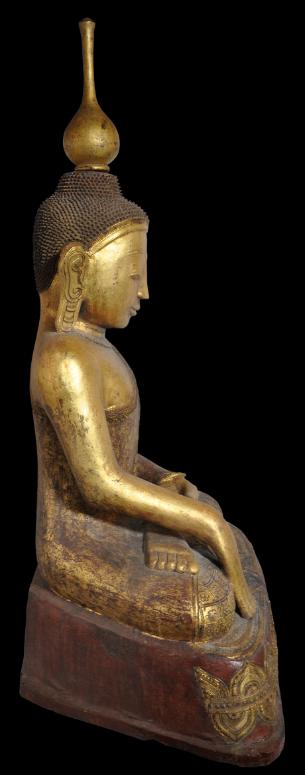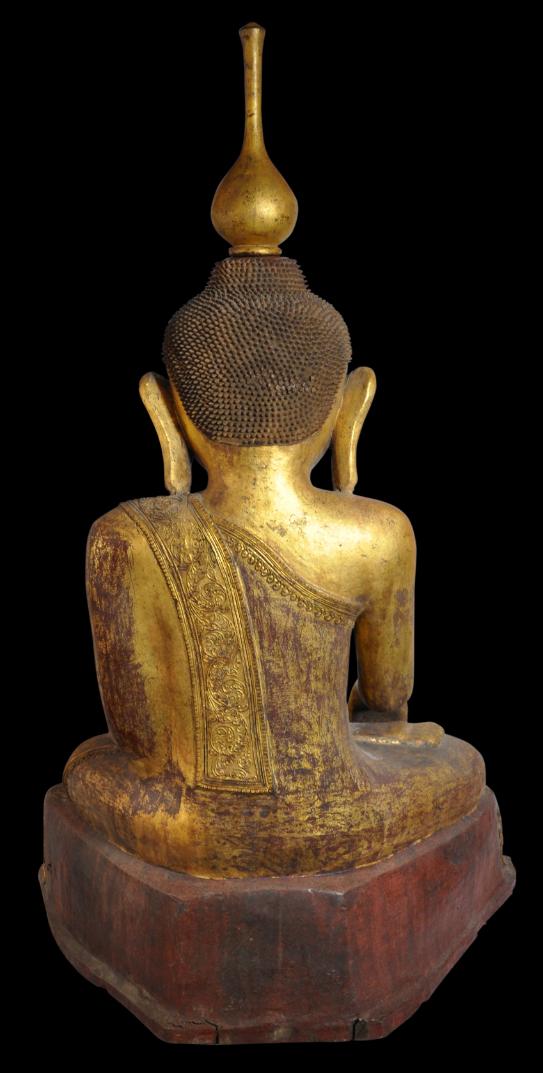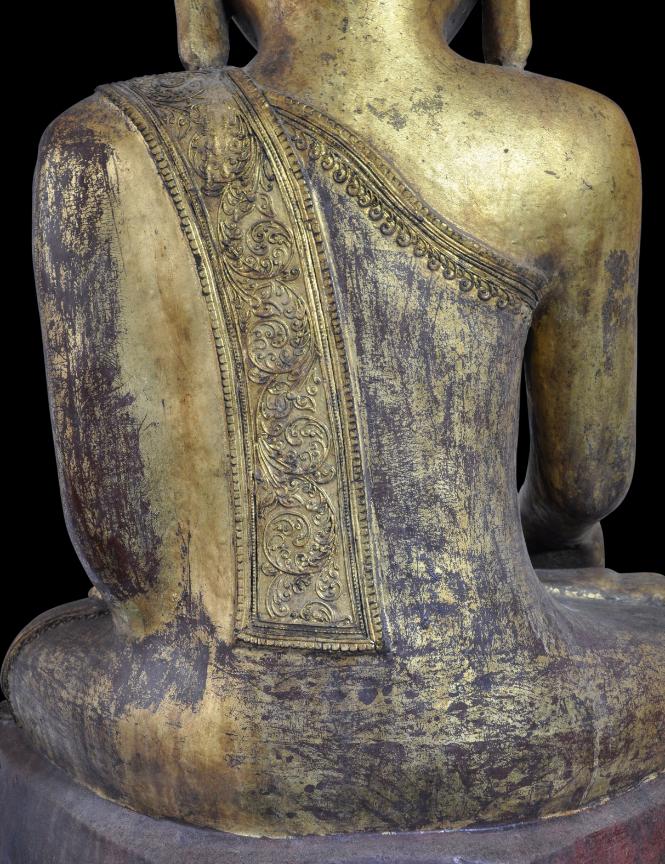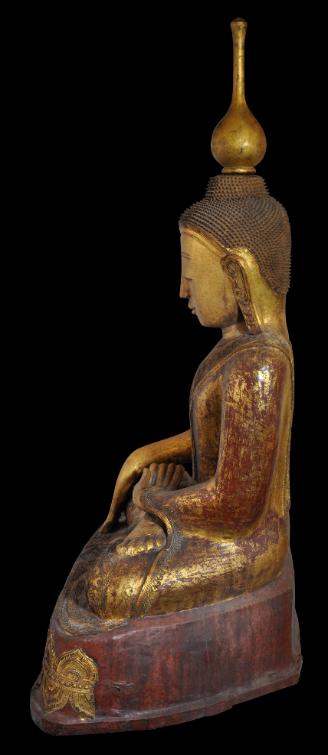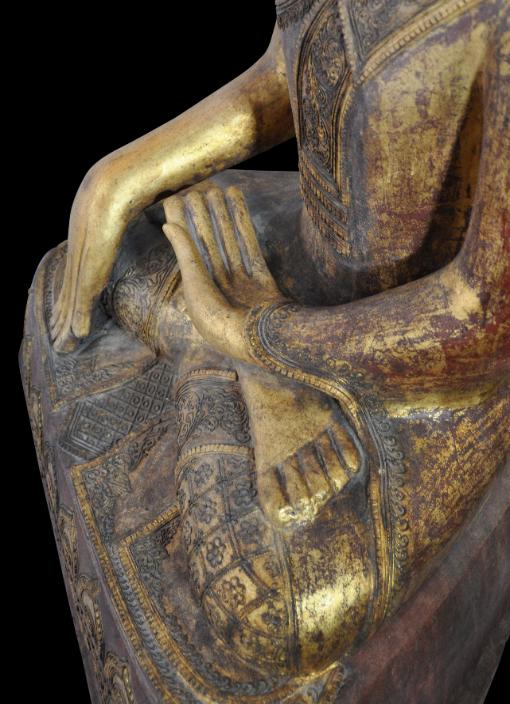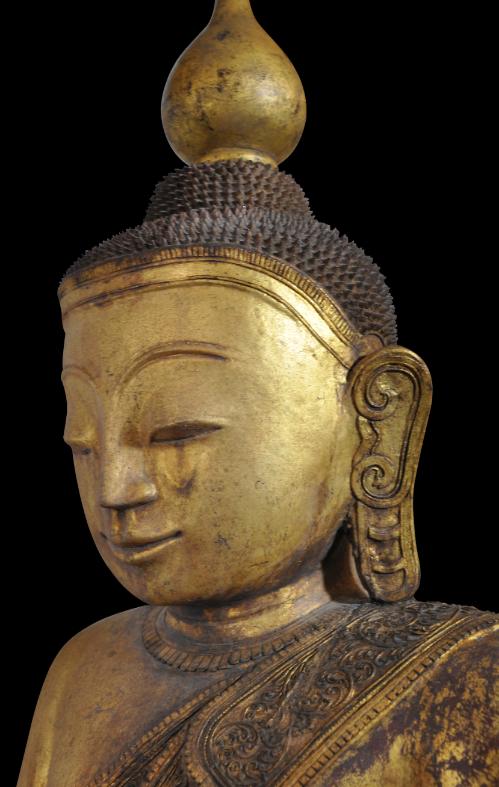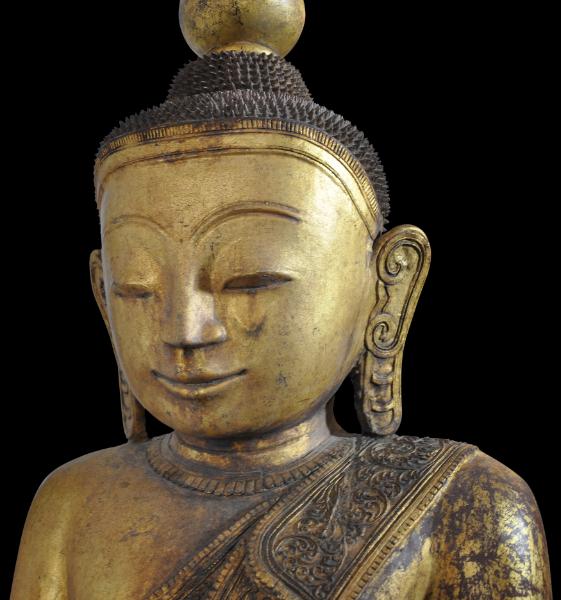Dry Lacquer Buddha, Burma, 19th century
Monumental, Large, Gilded, Dry Lacquer Buddha
Burma, probably Lower Burma
circa 1850 or earlier
height: 136cm, width: 78cm, depth: 55cm
This unusually large and splendid Buddha is hollow and made almost entirely from lacquer that is decorated in gold leaf. It has relatively little weight despite its significant size, and so is readily lifted by just one person.
The image is dressed in monastic robes. The Buddha is shown seated on an ornate, tiered platform, in bhumisparshamudra; his left hand rests, palm upward, on his lap, and the right hand rests on his right knee, calling the earth to witness. He has elongated earlobes to demonstrate his princely parentage, and a pleasing, serene face with gently smiling lips.
The robes are elaborately decorated in relief with thayo work – a process whereby thin, rolled strands of lacquer and ash putty are applied in patterns. This work has then been gilded along with the rest of the image.
The image’s cranial protuberance has been carved from a single piece of solid wood. It is gilded and is inserted into a cavity at the top of the head.
According to Isaacs & Blurton (2000), the dry lacquer technique of sculpture production appears to have originated in China. It is not clear when the technique first started to be used in Burma, but by the eighteenth century the technique was well established. It had largely been lost by the mid-twentieth century. The method involves a core image being modelled in clay. This is then covered by a wash of fine ash and water on top of which is applied a putty of lacquer sap and teak sawdust. This is further moulded and shaped, thus providing what will become the completed image. Once the outer mould is dry, the inner clay core is removed and the outer image can be sealed, coated with a refined lacquer mixture, polished and gilded. The end result is a fine but very light sculpture.
The British Museum has a Buddha also of gilded dry lacquer which it ascribes to the eighteenth or nineteenth century and which entered the museum’s collection in 1919. The Museum’s example also shows the image dressed in the garments of a Burmese king. It is of similar height. (See Isaacs & Blurton, 2000, p. 75).
This example is in fine condition. There is no significant damage or repairs, other than expected, minor age-related rubbing. There is a small fault to an area of thayo work on the robes on the upper left part of the chest but this dates t the time of manufacture and is rather lost on the overall profusion. The image has come from an English private collection and was acquired by the collector in the UK. It is likely that it has been in the UK since colonial times.
References
Fraser-Lu, S., Burmese Lacquerware, White Orchid Books, 2000.
Isaacs, R., & T.R. Blurton, Burma and the Art of Lacquer, River Books, 2000.
Provenance:
private collection, UK
Inventory no.: 3487
SOLD
